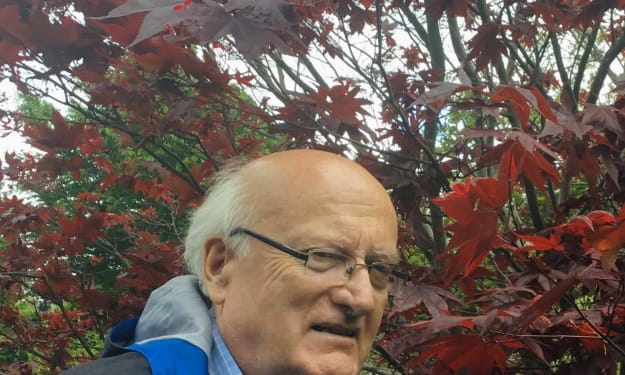Burning Bright/Come Away, Human Child
The Present is the Future (i and ii)

(i) Burning Bright
I dreamed about the tiger tonight--approach of handlers and veterinary physicians to the great cat into whom, across species, the invisible worldwide celebrity had perilously entered. Some of those managing the beast were young enough to have partied at close range on sun-spackled beaches with mammals, on the whole, more lethal than this cat they observed at a respectful distance, or tranquilized first before nearer approach. Some were old enough to fear far more the infinitesimal creature within, that may make it under sedation a greater threat than it would be awake, charging, thoroughly pissed as perhaps it has every right to be: you nearly eliminate my kind in their natural state but save specimens of us for show; granted, you care for us in these sheltered unnatural places until suddenly we come in contact with a danger unknown in the wild (where with all due modesty, we were for long ages the principal danger, a crown we’ve ceded a good few of your generations now); you lift us for our safety out of a habitat you’ve made inhospitable for us and our prey, and what happens? an invisible enemy, bred by the same genius that makes civilization, war, prisons, discotheques, casinos, air conditioning, jet exhaust, books and films and music and such, bunker style luxury condos and zoos, slips without being seen through these sheltering bars as easily as it leaps across borders from nation to nation, and lays me low. Your safety is another name for danger.
(ii)
Come Away, Human Child
So someone I know quite well wondered why I was rewriting fairy tales in our time of climate change. Well, the piece she was talking about, A Really Big Shoe, is 15 years old or thereabouts, and the main thing I learned from its performance at Sing for Your Supper was that it was probably unsalvageable (which happens to writers more often than they care to admit). On the other hand, since then I've written a full length play which mashes Little Red Riding Hood with film noir and the police procedural, CSI: Grandma's House, and I don't consider that play in any way an evasion. On the other other hand, in the year I wrote A Really Big Shoe and the years since, I've also written fierce ecological fables like Game Rooms, Mindlight and Forest City--I wouldn't say I'd exactly neglected these themes.
I chiefly blame the sickly sweet shroud, thin as a sheet with the consistency of marshmallow, that's been thrown over these grand fables by the Disney empire for the really odd notion going around, that the folk wisdom embedded in fairy tales is sugary, escapist and inconsequential. It's a dangerous mistake to make--we really need their insights along with all the others of human history--going all the way back to the cave paintings of prehistoric time--if we intend to surmount the cluster of crises that confront us now.
It goes back further than that of course. I'm pretty sure I was thinking, talking and writing ferociously about environmental concerns at least as far back as when I was fifteen. (You don't want to know how long ago that was, and I often wish I didn't myself; these are not new crises.) I don't know when it occurred to me what the key departure point for thinking and action about climate change--dimly at least, very early on I think. With lucid intelligence, certainly not for quite a while. If the CBC transcript of Greta Thunberg's four point plan for activism about the environment is accurate--rarely a safe assumption with journalistic summaries--she hasn't really framed it in her mind yet. The first of her steps in climate activism is not, as it should be, concerted action to attack the growing economic disparity everywhere in the world at its root--which pretty much necessitates attacking the war economy, everywhere, which is the frequently explicit and always implicit justification of it. If something isn't done to halt and reverse the pauperization of most of the earth's population for the enrichment of an insanely minuscule portion of same, the four steps to ecological action she does outline will never be more than bandaids thrown over a belly wound made with a mortar round. I grant you, that's the sort of extreme imagery you'd expect from a fairy tale, but I'm not sure, for all that, that it's especially unrealistic. I wish it were; can we make it so?
[A tip function is available with my submissions I understand. It is certainly not mandatory--I want people chiefly to enjoy my work--but if you enjoy it enough to feel the writer could use a boost, and have the wherewithal, feel free.]





Comments
There are no comments for this story
Be the first to respond and start the conversation.